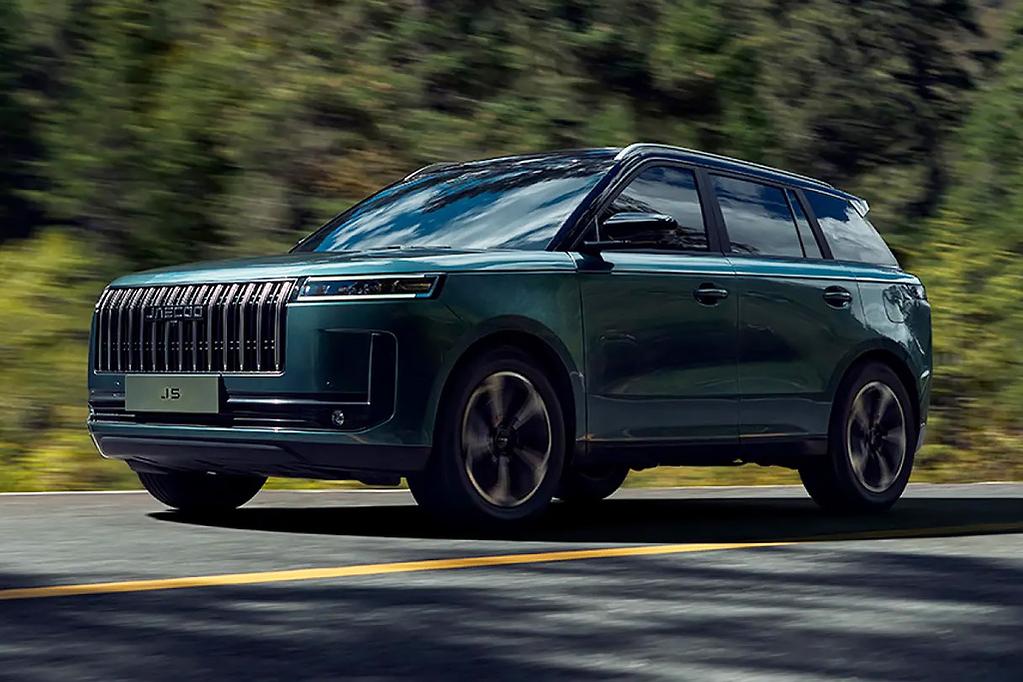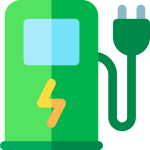
Australia’s electric vehicle market is shedding its boutique image. Once the preserve of premium imports and early adopters, EVs are now accelerating into mainstream consideration – driven by tightening global supply, improving local infrastructure and a wave of competitively priced models from China. The recent regulatory approval for Chery’s Jaecoo J5 EV underlines that shift: a purpose-built, affordable electric SUV that could broaden access to electric mobility for many Australian drivers.
Why the Jaecoo J5 EV approval matters
Regulatory clearance under the Australian Design Rules (ADR) is the essential gateway for any new vehicle brand. Jaecoo’s J5 EV passing that process is more than administrative: it signals an imminent retail push that will increase choice in the small-mid SUV segment, a category Australians love. Beyond the immediate product, approval for a vehicle from Chery’s Jaecoo sub‑brand is further confirmation that Chinese manufacturers are serious about long-term participation in Australia – bringing production scale, vertical integration and price pressure to the local market.
Key specifications and what they mean for Australian drivers
The approval documents released with the J5 EV offer practical, buyer‑relevant detail:
- Motor and performance: The Australian‑cleared J5 EV lists a 155 kW front-mounted electric motor. That level of peak power is competitive for a compact-to-mid-size SUV, promising brisk acceleration for urban driving and confident highway overtaking.
- Battery chemistry and range: Although the approval did not publish a definitive battery capacity, international J5 variants point to a circa‑60.9 kWh Lithium Iron Phosphate (LFP) pack and a WLTP range in the vicinity of 400 kilometres. LFP batteries are increasingly common in reasonably priced EVs because they are cost-effective, durable and thermally stable – traits that suit everyday Australian use.
- Weight, dimensions and towing: At around 1,710 kg tare weight and approximately 4.4 metres in length, the J5 EV is positioned as a compact five-seater that still offers genuine SUV practicality. Its braked towing capacity of 750 kg and ground clearance of roughly 180 mm provide useful versatility for light weekend trailers and trips on unsealed roads.
- Packaging implications: The J5 EV’s relatively light mass for an electric SUV points to efficient vehicle packaging and lower rolling energy requirements – an important contributor to real-world range and running costs.
What the technical package delivers in practice
If the approximate 400 km WLTP figure translates to real-world conditions – and LFP chemistry typically sustains performance over many years – the J5 EV would cover daily commuting and most regional weekend trips without frequent top-ups. For many Australian households this level of range, combined with a competitive price point, would remove a major barrier to EV adoption.
Design and positioning – built for “rugged urban” Australia
Jaecoo positions the J5 as a premium, adventure-focused model within Chery’s family. The combination of compact exterior sizing and SUV ground clearance aims to match Australian buyers’ expectations: city-friendly dimensions for parking and manoeuvring, plus enough capability for gravel roads and caravan-park runs. Interior space and tech features will determine value perception on launch, but the platform-led architecture that underpins many new Chinese EVs typically delivers good interior packaging and feature content for the money.
Market impact: price, competition and consumer choice
Three dynamics will shape how disruptive the J5 EV actually becomes in Australia:
- Price pressure: Chery and its offshoots have built a reputation for delivering high feature content at aggressive price points. If Jaecoo follows that playbook, the J5 EV could undercut several incumbents, hastening price realignment across the segment.
- Broader choice: Australian buyers want more mid‑market EV options. The J5 EV joins an expanding roster – from legacy European and Korean models to Chinese entrants such as BYD, MG and others – intensifying competition and accelerating product development.
- Platform- and software-driven advantages: Vehicles designed on dedicated EV platforms tend to provide better space utilisation and battery integration than legacy conversions. Manufacturers that pair that hardware with regular software updates can add ongoing value post-sale, an expectation buyers increasingly have.
Charging, ownership and real-world considerations
Buyers will rightly scrutinise charging performance, servicing availability and long-term battery guarantees:
- Charging network compatibility: Approval documents typically do not disclose final charging power. Australian buyers will be watching for AC charging rates, DC fast‑charge capability and compatibility with public chargers from networks such as Chargefox, Ampol (including Ampol e‑Store locations), and regional operators like NRMA. Real-world charging speed, not just peak figures, influences trip planning and convenience.
- After‑sales and dealer reach: A competitive retail price matters less if service coverage is thin. Chery’s prior Australian entries and their dealer networks provide a template, but Jaecoo will need to demonstrate reliable local parts supply, service training and warranty support to win mainstream trust.
- Battery warranty and longevity: LFP chemistry tends to degrade more slowly in calendar ageing terms but can be more conservative on energy density than nickel-based chemistries. Clear warranty terms and long‑term battery performance data will be crucial selling points.
Regulatory and infrastructure context in Australia
Australia’s EV ecosystem is accelerating but remains patchwork: state incentives, municipal initiatives and growing private charging networks are improving access, yet federal policy has historically been slower to provide a national vehicle incentive framework. That environment makes competitively priced models with solid aftersales networks – like the J5 EV promises to be – particularly influential in driving uptake in the near term.
What to watch next
The most decisive milestones for Jaecoo and the J5 EV in Australia are straightforward:
- Official local specification and pricing: The MSRP, available trim levels and feature lists will determine how the J5 stacks up against rivals.
- Launch timing and dealer rollout: When Jaecoo confirms showroom availability and the scale of its dealer network, prospective buyers will better understand accessibility for test drives, servicing and warranty support.
- Real-world reviews and independent testing: Local range tests, safety assessments and long-term ownership reports will convert regulatory approval into market credibility.
The bottom line
The Jaecoo J5 EV’s approval for Australia is a clear marker of the changing EV landscape. If Jaecoo brings the J5 to market with a competitive price, solid aftersales support and the expected 400 km-ish range on an LFP battery, it will be a compelling proposition for many buyers seeking an affordable, practical electric SUV. Beyond the model itself, the J5’s arrival reinforces the broader story: Australian consumers will increasingly benefit from greater choice, sharper prices and better technology as new brands scale up locally.
Conclusion
Chery’s Jaecoo J5 EV arriving in Australia is emblematic of the market’s next phase – shifting from niche to mainstream. Approval under the ADR opens the pathway, but success will depend on the final local specification, pricing, charging compatibility and the strength of Jaecoo’s dealer and service network. For buyers, the J5 EV promises the kind of real-world range and SUV practicality that could make electric motoring viable for a broader swathe of Australians. For the market, it signals intensifying competition, accelerated innovation and, ultimately, more accessible electrification.
FAQs
Has the Jaecoo J5 EV been fully approved for sale in Australia?
Regulatory approval under the Australian Design Rules has been secured for the Jaecoo J5 EV, which is the necessary step before retail sales. Full market launch still depends on Jaecoo’s commercial rollout plans, pricing announcements and dealer network establishment.
What is the expected range and battery type for the J5 EV?
Australian approval documents and international variants indicate the J5 EV will use a Lithium Iron Phosphate (LFP) battery, with international figures suggesting around a 60.9 kWh capacity and a WLTP range in the vicinity of 400 km. Final Australian figures will be confirmed by Jaecoo at launch.
When will the Jaecoo J5 EV be available to buy in Australia?
A precise retail launch date and pricing are still to be confirmed by Jaecoo. Approval clears a key regulatory hurdle; the company will announce the local availability timetable and dealer rollout when ready.
How competitive will the J5 EV be on price?
Jaecoo and its parent Chery are known for aggressive pricing strategies in many markets. Market expectations are that the J5 EV will be competitively priced relative to other small‑to‑mid SUVs, but exact comparisons will require the official Australian price list.
What should buyers look for before purchasing an imported Chinese-brand EV?
Key considerations include: the local warranty and battery warranty terms; the size and coverage of the dealer and service network; compatibility with Australian public charging networks; independent safety ratings and real‑world range tests; and software update and telematics support.
About EV Evolution
EV Evolution is the leading online platform dedicated to Australian electric vehicle owners and enthusiasts. We foster a vibrant community, delivering essential EV news and insights, and enhancing user engagement through our innovative, AI-powered chatbot for dynamic discussions. Our mission is to empower Australian electric vehicle owners and enthusiasts by fostering a vibrant, AI-driven online community that connects, informs, and advances the nation’s electric vehicle landscape.




